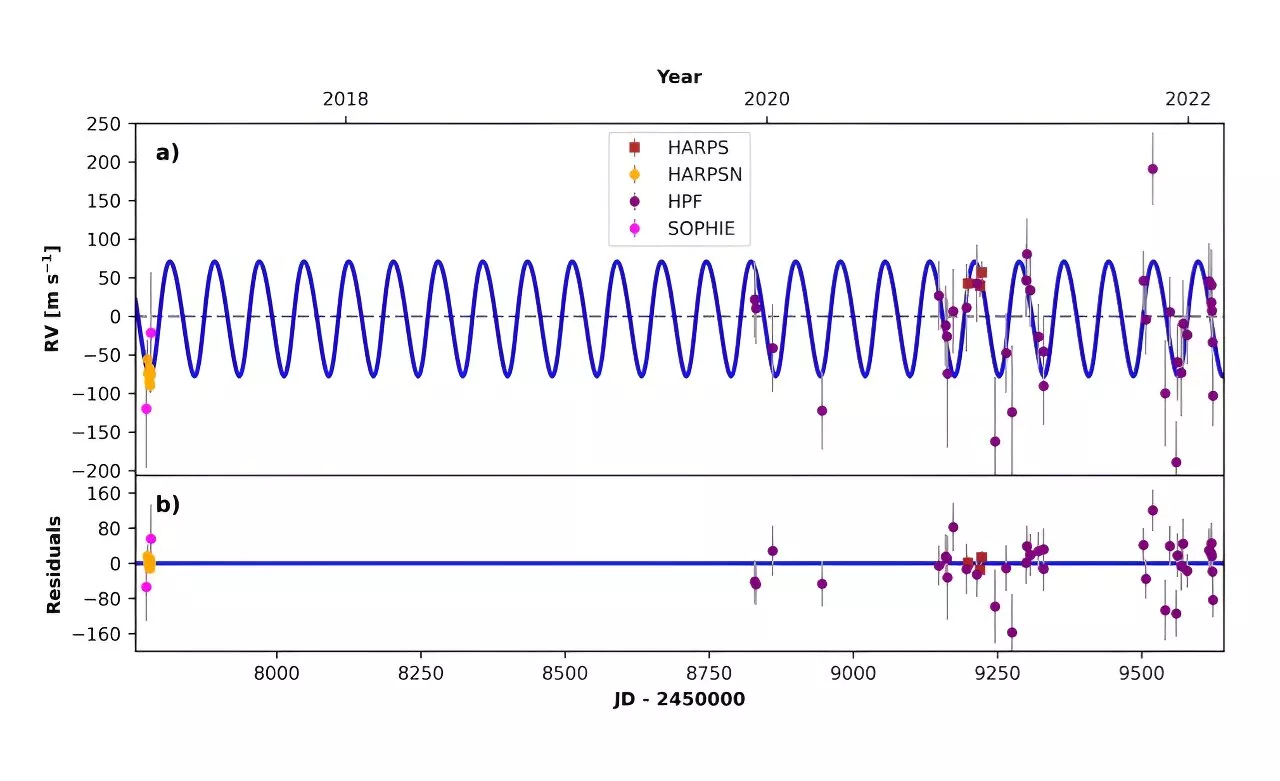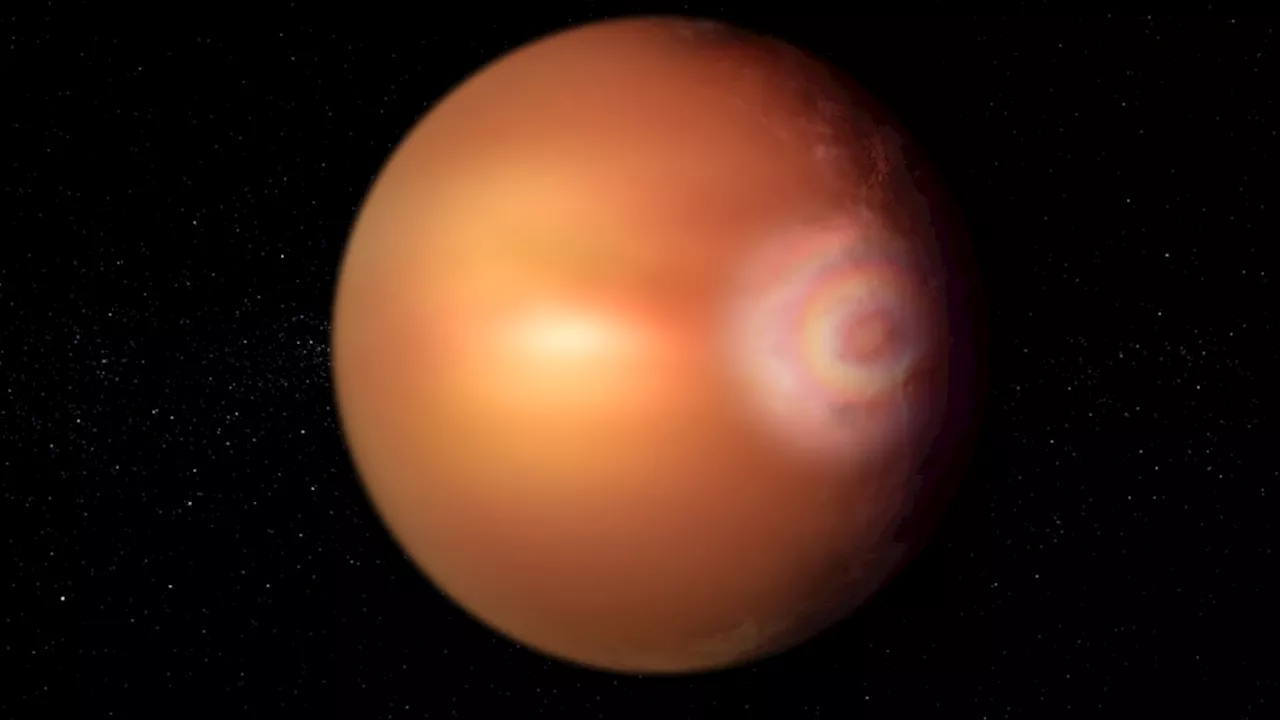Scientists are looking to detect CHNOPS in exoplanet atmospheres to understand their potential for supporting life.
A NASA graphic explaining how a telescope can measure an exoplanet atmosphere using spectroscopy. Courtesy: NASA /JPL-Caltech/Lizbeth B. De La Torre.
In anticipation of that telescope’s mission, Herbort and his co-researchers are preparing for the results and what they mean for habitability. “The detailed understanding of the planets itself becomes important for interpreting observations, especially for the detection of biosignatures,” they write. In particular, they’re scrutinizing the idea of aerial biospheres.
“This concept of aerial biospheres enlarges the possibilities of potential habitability from the presence of liquid water on the surface to all planets with liquid water clouds,” the authors explain. “Our approach does not directly aim for the understanding of biosignatures and atmospheres of planets, which are inhabited, but for the conditions in which pre-biotic chemistry can occur,” they write. In their work, the minimum atmospheric concentration for a nutrient to be available is 10,” they write. They also found that carbon is generally present in every simulated atmosphere and that sulphur availability increases with surface temperature.
But surface water plays several roles in atmospheric chemistry. It can bond with some nutrients in some circumstances, making them unavailable, and in other circumstances, it can make them available. This complicates matters on worlds covered by oceans. Pre-biotic molecules might not be available if there’s no opportunity for water and rock to interact with the atmosphere. “If indeed it can be shown that life can form in a water ocean without any exposed land, this constraint becomes weaker, and the potential for the surface habitability becomes mainly a question of water stability,” the authors write.
NASA Exoplanets Atmosphere Spectroscopy CHNOPS Liquid Water Habitability JWST Ariel
United Kingdom Latest News, United Kingdom Headlines
Similar News:You can also read news stories similar to this one that we have collected from other news sources.
 Warm Jupiter exoplanet orbiting distant star detectedAstronomers report the discovery of a new warm Jupiter exoplanet orbiting a distant star in the open cluster Messier 67. The newfound extrasolar world, designated S1429 b, is almost twice as massive as Jupiter. The finding was detailed in a paper published March 5 on the pre-print server arXiv.
Warm Jupiter exoplanet orbiting distant star detectedAstronomers report the discovery of a new warm Jupiter exoplanet orbiting a distant star in the open cluster Messier 67. The newfound extrasolar world, designated S1429 b, is almost twice as massive as Jupiter. The finding was detailed in a paper published March 5 on the pre-print server arXiv.
Read more »
 First tidally locked super-Earth exoplanet confirmedAn international team of astronomers and astrophysicists has confirmed the first known observance of a tidally locked super-Earth exoplanet.
First tidally locked super-Earth exoplanet confirmedAn international team of astronomers and astrophysicists has confirmed the first known observance of a tidally locked super-Earth exoplanet.
Read more »
 Could We Directly Observe Volcanoes on an Exoplanet?Space and astronomy news
Could We Directly Observe Volcanoes on an Exoplanet?Space and astronomy news
Read more »
 This hellish exoplanet's skies rain iron and create a rainbow-like effectRobert Lea is a science journalist in the U.K. whose articles have been published in Physics World, New Scientist, Astronomy Magazine, All About Space, Newsweek and ZME Science. He also writes about science communication for Elsevier and the European Journal of Physics. Rob holds a bachelor of science degree in physics and astronomy from the U.K.
This hellish exoplanet's skies rain iron and create a rainbow-like effectRobert Lea is a science journalist in the U.K. whose articles have been published in Physics World, New Scientist, Astronomy Magazine, All About Space, Newsweek and ZME Science. He also writes about science communication for Elsevier and the European Journal of Physics. Rob holds a bachelor of science degree in physics and astronomy from the U.K.
Read more »
 First indications of a rare, rainbow ‘glory effect’ on hellish exoplanetResearchers believe they may have identified a set of rainbow-like colorful rings, called a glory, on a planet outside our solar system for the first time.
First indications of a rare, rainbow ‘glory effect’ on hellish exoplanetResearchers believe they may have identified a set of rainbow-like colorful rings, called a glory, on a planet outside our solar system for the first time.
Read more »
